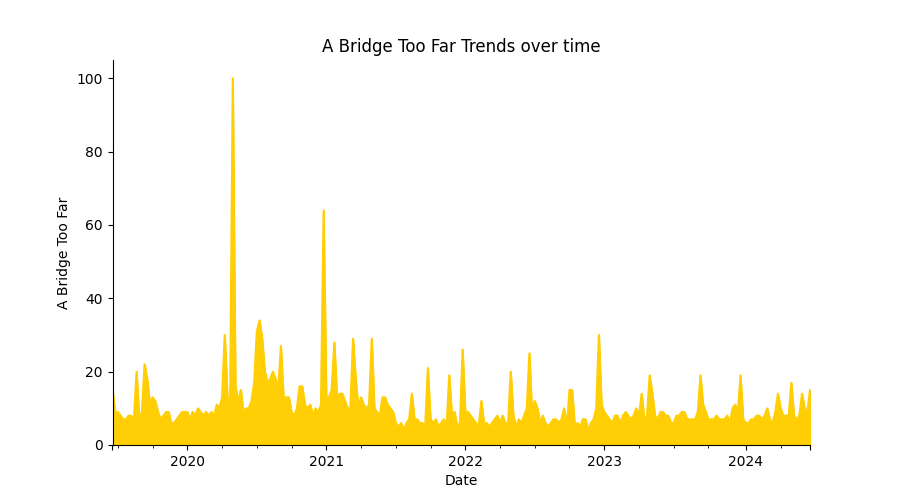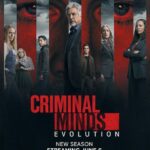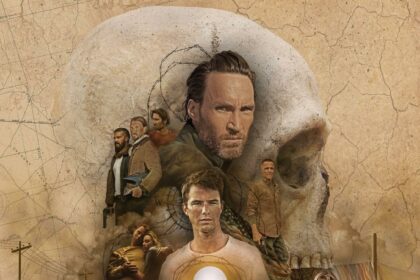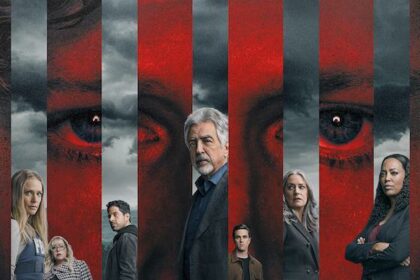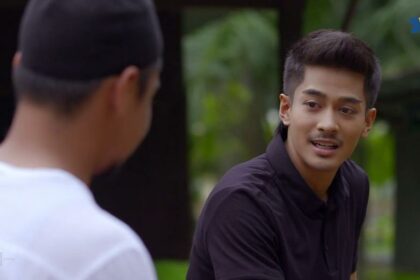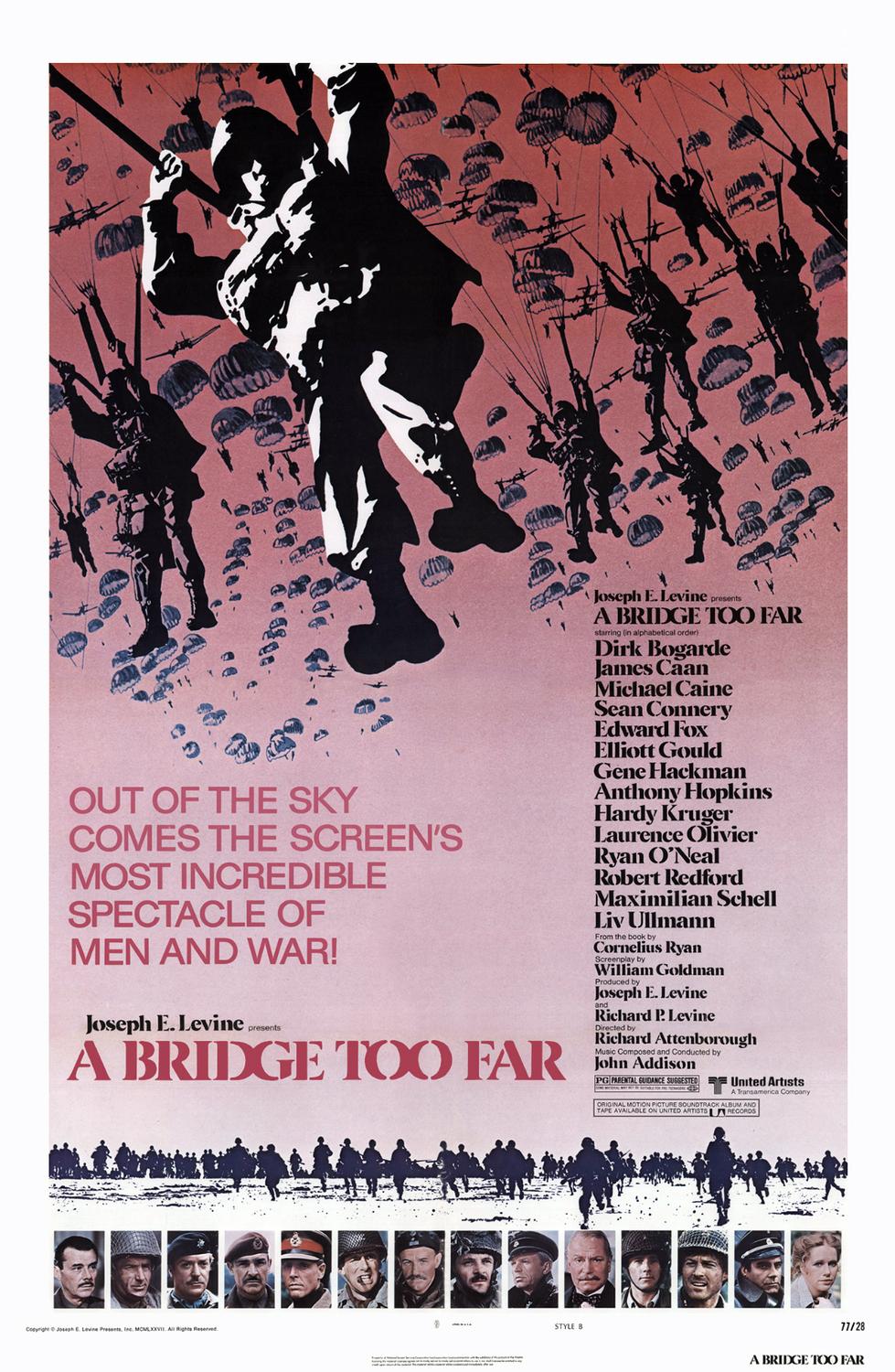
🪶 Story & Synopsis
Set during World War II, “A Bridge Too Far” directed by Richard Attenborough portrays the failed Allied invasion of the Netherlands in September 1944, known as Operation Market Garden. The film follows a combined British and American paratrooper force led by American General Gavin and British General Urquhart, played by Sean Connery. Their plan is to secure a crucial highway leading from the Netherlands into Germany to allow British ground troops to enter enemy territory.
As the Allies push forward with confidence, they soon realize they may have overestimated their abilities. The storyline unfolds with intense battle sequences and strategic maneuvers as the Allies face resistance and unexpected challenges along the way. The movie captures the complexities of war, the bravery of soldiers, and the harsh realities of combat.
One of the pivotal moments in the film is when the Allies manage to secure the crucial bridge, despite facing numerous obstacles and setbacks. Through sheer luck, the demolition charges laid by the Germans fail to detonate, allowing Allied tanks to cross over and advance further into enemy territory. However, the success comes at a cost, as delays and complications continue to hinder the progress of the operation.
“A Bridge Too Far” offers a gripping portrayal of historical events, showcasing the bravery and sacrifices of the soldiers involved in Operation Market Garden. The movie stays true to the actual events of the failed invasion, highlighting the challenges faced by the Allied forces and the intricacies of military strategy during wartime.
With a stellar cast including Dirk Bogarde, Michael Caine, James Caan, and Edward Fox, the film brings to life the courage and determination of the soldiers who fought in one of the most ambitious military operations of World War II. Richard Attenborough’s direction, coupled with William Goldman’s screenplay based on Cornelius Ryan’s book, delivers a compelling narrative that keeps audiences engaged from start to finish.
🧑 Cast & Crew
Dirk Bogarde, James Caan, Michael Caine, Sean Connery, Edward Fox, Elliott Gould, Gene Hackman, Anthony Hopkins, Hardy Krüger, Laurence Olivier, Ryan O’Neal, Robert Redford, Maximilian Schell, Liv Ullmann
| Actor | Role |
|---|---|
| Dirk Bogarde | Lieutenant General Browning |
| James Caan | Staff Sergeant Dohun |
| Michael Caine | Lieutenant Colonel J.O.E. Vandeleur |
| Sean Connery | Major General Urquhart |
| Edward Fox | Lieutenant General Horrocks |
| Elliott Gould | N/A |
| Gene Hackman | Major General Sosabowski |
| Anthony Hopkins | Lieutenant Colonel Frost |
| Hardy Krüger | N/A |
| Laurence Olivier | Doctor Spaander |
| Ryan O’Neal | Brigadier General Gavin |
| Robert Redford | Major Julian Cook |
| Maximilian Schell | N/A |
| Liv Ullmann | N/A |
💬 Reviews and feedback
Picture this: a cinematic journey that takes you on a rollercoaster of emotions, from exhilaration to devastation, leaving you with a bittersweet aftertaste. That’s exactly what “A Bridge Too Far,” the 1977 war film directed by Sir Richard Attenborough, delivers. Strap in as we delve into the heart of this controversial yet captivating masterpiece.
First off, let’s address the elephant in the room – the controversy surrounding Sir Dirk Bogarde’s portrayal of General Browning. It seems like if General Browning were alive today, he might have considered legal action against the director and screenwriter for defamation. Now that’s drama both on and off-screen!
But controversy aside, is “A Bridge Too Far” worth all the buzz? Absolutely! The film has stood the test of time as one of the best war films to grace our screens. With each viewing, you uncover new layers of brilliance woven into its narrative tapestry.
Plot and Themes
- The story revolves around Operation Market Garden, a failed Allied mission during World War II. It sheds light on the complexities of war, showcasing the struggles and sacrifices made by soldiers and commanders alike.
- The themes of futility, banality, and unpredictability of war are portrayed with raw authenticity. The narrative doesn’t shy away from depicting the harsh realities faced by those involved in wartime operations.
Acting and Characters
- The ensemble cast delivers stellar performances that breathe life into their respective characters. From Anthony Hopkins to Ryan O’Neal and Robert Redford, each actor brings depth and authenticity to their roles.
- Sean Connery shines as a military man, embodying strength, wit, and resilience with finesse. His portrayal adds layers of complexity to the film’s character dynamics.
Direction and Cinematography
- Sir Richard Attenborough’s direction is nothing short of masterful. He skillfully navigates through the intricacies of wartime storytelling, capturing both grandeur and intimacy in every frame.
- The cinematography is visually striking, immersing viewers in the gritty realism of war-torn landscapes. Each shot is meticulously crafted to enhance the emotional impact of pivotal moments.
Production Design and Score
- The production values in “A Bridge Too Far” are top-notch, transporting audiences back to the battlegrounds of World War II with stunning authenticity.
- The musical score complements the narrative beautifully, evoking a range of emotions from hope to despair. It serves as a powerful storytelling tool that heightens the overall cinematic experience.
Special Effects and Editing
- The special effects work seamlessly to recreate historical battle scenes with jaw-dropping realism. From explosive sequences to intricate details, every visual element contributes to an immersive viewing experience.
- The editing keeps the pacing engaging despite the film’s lengthy runtime. It weaves together multiple storylines cohesively while maintaining tension and suspense throughout.
Binge-watching Tip: To fully appreciate the depth of “A Bridge Too Far,” consider revisiting key scenes or researching more about Operation Market Garden for added context.
In conclusion, “A Bridge Too Far” may be flawed in its ambition but excels in its portrayal of human resilience amidst adversity. It stands as a testament to both historical accuracy and cinematic brilliance that continues to captivate audiences decades later.
Rating: 9/10
Remember: In war as in cinema, sometimes it’s those who fall short who leave the most enduring impact!
| Pros | Cons |
|---|---|
| Excellent performances by all actors | Portrayal of General Browning controversial |
| Historically accurate depiction of events | Some find the film unwieldy and tedious |
| Great direction by Richard Attenborough | Long runtime may not appeal to all viewers |
| High production values | Some critics find the film shapeless |
| Impressive cinematography and sound | Some viewers may find the film profoundly depressive |
Feedback
-
A Bridge Too Far (film) - Wikipedia
A Bridge Too Far Directed by Richard Attenborough Screenplay by William Goldman Based on A Bridge Too Far by Cornelius Ryan
Produced by - Joseph E. Levine
- Richard P. Levine
Starring Cinematography Geoffrey Unsworth Edited by Antony Gibbs Music by John Addison Productioncompany
Joseph E. Levine Productions
Distributed by United Artists Release date
-
A Bridge Too Far (1977) - IMDb
- Won 4 BAFTA Awards
- 7 wins & 5 nominations total
- Underground Leader’s Wife
- (as Marlies Van Alcmaer)
- Underground Leader’s Son
- (as Eric Van’t Wout)
- Gen. Blumentritt
- (as Hans Von Borsody)
- Director
- Writers
- All cast & crew
- Production, box office & more at IMDbPro
Did you know
- TriviaSir Dirk Bogarde’s portrayal of General Browning was highly controversial, and several friends of the late General suggested that, had Browning still been alive in 1977, he would have sued director Sir Richard Attenborough and screenwriter William Goldman for libel. Bogarde took issue with the portrayal during filming, having known Browning personally, as he was a member of Field Marshal Bernard L. Montgomery’s staff during the war. Bogarde was upset by the personal criticism he received following the release of the film, especially as he had not been involved in the writing of the script. Although Attenborough publicly took responsibility for the controversy, his relationship with Bogarde was never the same again. Browning’s son said he believed his father was made the fall guy for the failure of Operation Market Garden in the film because the producers knew there would have been too much flak if they went after Montgomery.
- GoofsThe Allied plans for Market-Garden were correctly shown as falling into German hands from a downed Allied plane. In the film, they were ignored. In actuality, they were turned over to German paratroop expert General Student, who realized their accuracy and importance and used them in determining his troop deployments.
- Quotes [an SS officer is approaching under a white flag] Major Harry Carlyle: Rather interesting development, sir. [to the German] Major Harry Carlyle: That’s far enough! We can hear you from there! SS Panzer Officer: My general says there is no point in continuing this fighting! He wishes to discuss terms of a surrender! Major Harry Carlyle: Shall I answer him, sir? Lt. Col. John Frost: Tell him to go to hell. Major Harry Carlyle: We haven’t the proper facilities to take you all prisoner! Sorry! SS Panzer Officer: [confused] What? Major Harry Carlyle: We’d like to, but we can’t accept your surrender! Was there anything else? [German officer walks off] Lt. Col. John Frost: Well, that’s that. [the officer returns to General Bittrich, and they converse in German] SS Panzer Officer: They rejected our surrender offer. What are your orders, Herr General? Lt. General Bittrich: Flatten Arnhem.
- Alternate versionsThe UK cinema release was cut by the BBFC in order to get an “A” rating by editing out the word “fucking” in the scene where James Caan holds the doctor at gunpoint, while Elliott Gould’s line “Roll the fuckers” was dubbed over with “Roll it, fellas.” In addition, a shot of a dead soldier with his intestines exposed was cut, and closeups of men’s bloody faces during the assault on Arnhem were also removed. The cuts were restored in the 15-rated video and DVD versions.
- Soundtracks3rd Movement(from Brandenburg Concerto No. 6 in B-Flat Major, BWV. 1051) (uncredited)Music by Johann Sebastian Bach
The final scene with Liv Ulman and Lawrence Olivier evacuating their estate turned into a graveyard is practically worth the price of admission by itself.
- Won 4 BAFTA Awards
-
A Bridge Too Far (1977) - YouTube
-
A Bridge Too Far movie review (1977) | Roger Ebert
Because “A Bridge Too Far” is such an exercise in wretched excess, such a mindless series of routine scenes, such a boringly violent indulgence in all the blood and guts and moans they could find, that by the end we’re prepared to speculate that maybe Levine went two or even three bridges too far. The movie’s big and expensive and filled with stars, but it’s not an epic. It’s the longest B-grade war movie ever made.
-
A Bridge Too Far (1977) - Full Cast & Crew - IMDb
A Bridge Too Far (1977)Full Cast & CrewDirected by
Richard Attenborough Writing Credits
Cornelius Ryan … (based on the book by) William Goldman … (screenplay by) Cast (in credits order) verified as completeProduced by
Joseph E. Levine … producer Richard P. Levine … producer John Palmer … associate producer Michael Stanley-Evans … co-producer Music by
John Addison Cinematography by
Geoffrey Unsworth … (photographed by) Editing by
Antony Gibbs Casting By
Miriam Brickman Production Design by
Terence Marsh Art Direction by
Stuart Craig Roy Stannard Alan Tomkins Costume Design by
Anthony Mendleson Makeup Department
Ronnie Cogan … chief hairdresser Tom Smith … makeup supervisor Ernest Gasser … makeup artist (uncredited) Nick Maley … makeup artist (uncredited) Production Management
Dickie Bamber … production manager: second unit (as Richard Bamber) Terence A. Clegg … production manager Grania O’Shannon … unit manager Eric Rattray … production supervisor Second Unit Director or Assistant Director
Bert Batt … assistant director: second unit Roy Button … assistant director Sidney Hayers … second unit director Steve Lanning … assistant director Geoffrey Ryan … assistant director David Tomblin … first assistant director Peter Waller … assistant director Andy Armstrong … second second assistant director (uncredited) Chris Carreras … second assistant director: second unit (uncredited) Arnold Schulkes … third assistant director (uncredited) Bill Westley … first assistant director: second unit (uncredited) Art Department
Peter Dukelow … construction manager Peter Howitt … set dresser John Lanzer … production buyer Jack Towns … property master Michael White … sketch artist Ken Barley … standby plasterer (uncredited) George Dean … painter (uncredited) Michael Guyett … standby painter (uncredited) Chris Seddon … drapesman (uncredited) Alfie Smith … props (uncredited) Arthur Wicks … dressing props (uncredited) Sound Department
Peter Horrocks … sound editor Gerry Humphreys … dubbing mixer Simon Kaye … sound recordist Robin O’Donoghue … dubbing mixer David Stephenson … sound boom operator Les Wiggins … sound editor Special Effects by
John Richardson … special effects supervisor Ron Cartwright … special effects technician (uncredited) Jeff Clifford … special effects technician (uncredited) John Evans … special effects technician (uncredited) George Gibbs … special effects coordinator (uncredited) David Harris … special effects technician (uncredited) Marc Ratcliffe … special effects technician (uncredited) Ian Wingrove … supervisor: second unit (uncredited) Visual Effects by
Wally Veevers … optical effects Doug Ferris … matte artist (uncredited) Stunts
Vic Armstrong … assistant stunt arranger Alf Joint … stunt arranger Roy Alon … stunts (uncredited) Joe Amsler … stunts (uncredited) Vic Armstrong … stunt double: Ryan O’Neal (uncredited) / stunts (uncredited) Dickey Beer … stunts (uncredited) Marc Boyle … stunts (uncredited) George Lane Cooper … stunts (uncredited) Jim Dowdall … stunts (uncredited) Joe Dunne … stunts (uncredited) Stuart Fell … stunts (uncredited) Nick Hobbs … stunts (uncredited) Gregory Hodal … stunt double: Ryan O’Neal (uncredited) / stunts (uncredited) Billy Horrigan … stunts (uncredited) Alf Joint … stunts (uncredited) George Leech … stunts (uncredited) Rick Lester … stunt driver (uncredited) Valentino Musetti … stunts (uncredited) Doug Robinson … stunts (uncredited) Tony Smart … stunts (uncredited) Alan Stuart … stunts (uncredited) Rocky Taylor … stunts (uncredited) Michael Turk … stunts (uncredited) Chris Webb … stunts (uncredited) Henry Weissenman … stunts (uncredited) Bill Weston … stunts (uncredited) Paul Weston … stunt double: Robert Redford (uncredited) / stunt double: Ryan O’Neal (uncredited) / stunts (uncredited) Jason White … stunts (uncredited) Camera and Electrical Department
Steve Barron … clapper loader Frank Batt … camera grip Robin Browne … aerial photography Wally Byatt … camera operator: second unit John Campbell … camera assistant John Cardiff … second aerial camera operator Nobby Clark … chief rigger (as Nobby Clarke) Ken Coles … second camera operator Jack Conroy … electrical supervisor Tony Jackson … clapper loader 2nd unit Roy Larner … gaffer: second unit Louis H. Lavelly … camera operator: second unit (as Lou Lavelly) Peter MacDonald … camera operator John Partington-Smith … parachute cameraman Bob Penn … still photographer Dave Waterman … parachute cameraman Harry Waxman … lighting cameraman: second unit Tony Browning … focus puller: second unit (uncredited) Frank Connor … set photographer: second unit (uncredited) Ted Deason … focus puller: second unit (uncredited) Danny Eccleston … lighting technician (uncredited) Brian Ellis … assistant camera (uncredited) Malcol
⚠️ Explanation (Spoiler)
In “A Bridge Too Far,” directed by Richard Attenborough, the ending unfolds as a tragic tale of ambition and sacrifice during World War II. The film portrays Operation Market Garden, where the Allied forces aim to capture crucial bridges in the Netherlands to expedite the end of the war. However, the operation faces significant hurdles and ends in devastation.
The Allies face unexpected challenges as they underestimate German resistance and struggle to secure the targeted bridges. The film depicts intense battles and heavy casualties on both sides, emphasizing the harsh realities of war. The climax centers on British troops’ failed attempt to capture the Arnhem Bridge, leading to being surrounded and cut off from reinforcements.
The movie highlights the sacrifices made by soldiers on both sides, underscoring the consequences of overconfidence in military planning. It serves as a poignant reminder of the unpredictability of warfare and the bravery exhibited by those involved. Despite the somber ending, “A Bridge Too Far” honors the resilience and sacrifice shown by soldiers during World War II.
Ultimately, the film leaves a lasting impact by portraying the grim outcomes of ambitious military operations and the indomitable human spirit in the face of adversity. It serves as a tribute to the courage displayed during wartime and prompts viewers to reflect on the sacrifices made by those who fought valiantly.
👪 Parents Guide & Age Rating
PG
Age Rating:
This movie “A Bridge Too Far” (1977) is rated R for strong violence and war-related scenes.
Parental Guide:
Sex & Nudity:
- There is minimal sexual content in the movie.
Violence & Gore:
- The movie contains intense war-related violence. An attacking army uses machine gun mounted trucks to storm a town. Defenders fire back with grenade launchers, machine guns, and rifles. There are scenes of characters getting shot, with visible blood and injuries.
- In a close-up shot, a defender gets shot in the arm and we see blood. He grabs at the wound, but continues shooting. There are scenes of bodies hanging limp over.
Profanity:
- There is minimal profanity in the movie.
Alcohol, Drugs & Smoking:
- There are a few scenes depicting alcohol consumption and smoking.
Frightening & Intense Scenes:
- The movie contains intense and frightening war scenes that may be disturbing for some viewers.
Overall, this movie is recommended for mature audiences due to its intense war-related violence and scenes. Parents should consider the strong content before allowing teenagers to watch it.
📺 Streaming and where to watch
| streaming service | extra information |
|---|---|
| Tubi | Watch A Bridge Too Far (1977) for free with ads on Tubi |
| Pluto TV | Stream A Bridge Too Far for free and on-demand with Pluto TV |
❝ Quotes and Cult
When you first named me to this command, I told you I had never jumped before, but I felt I should at least give it a go. You told me, 'Roy, you're much too old and far too large for that sort of thing.'
Well, I didn't tell you at the time, but you did me a favor. You see, I'm prone to airsickness.
Heroes died in Europe to protect villains in Washington
🤖A Bridge Too Far Reddit Talks
- General Overview and Appreciation:
“A Bridge Too Far” is widely regarded as a remarkable war film that has been somewhat overlooked despite its impressive ensemble cast and historical significance. The film depicts the events of Operation Market Garden during World War II, specifically the Battle of Arnhem.
- Historical Accuracy:
The film is praised for its accurate portrayal of the battle, providing a detailed and immersive account of the events. It effectively captures the scale and devastation of the conflict.
- Impressive Cast:
The film boasts an exceptional cast, including Sean Connery, Michael Caine, James Caan, Anthony Hopkins, and Gene Hackman. Their performances are highly acclaimed for bringing depth and authenticity to the characters.
- Technical Achievements:
“A Bridge Too Far” showcases impressive technical aspects, particularly in its depiction of large-scale battle sequences. It effectively conveys the chaos and intensity of combat.
- Flaws and Criticisms:
Despite its overall quality, the film has some flaws. Some critics find the pacing to be slow in certain sections, and the portrayal of the Russian characters has been criticized for its use of British accents.
- Themes and Impact:
The film explores themes of war, sacrifice, and the human cost of conflict. It offers a sobering reflection on the futility of war and the devastating consequences it brings.
- Legacy and Significance:
“A Bridge Too Far” remains an important and influential war film. It provides a valuable historical record of the Battle of Arnhem and serves as a reminder of the horrors and complexities of war.
Top discussions
- https://www.reddit.com/r/TrueFilm/comments/i7c3yv/a_bridge_too_far_is_a_really_awesome_albeit/
- https://www.reddit.com/r/movies/comments/w1tmd2/a_bridge_too_far/
- https://www.reddit.com/r/iwatchedanoldmovie/comments/ah23xt/i_watched_a_bridge_too_far_1977/
- https://www.reddit.com/r/movies/comments/a2ituq/a_war_movie_every_movie_lover_should_see_a_bridge/
- https://www.reddit.com/r/movies/comments/aezegd/finally_watched_a_bridge_too_far/
❓ Frequently Asked Questions
What is the story behind the movie A Bridge Too Far?
The film is based on the 1974 non-fiction book of the same title, written by Cornelius Ryan. It details the failed Allied invasion of the Netherlands during World War II. This unsuccessful invasion was code-named Operation Market Garden, and it took place in September 1944.
What happened at the end of A Bridge Too Far?
The bridge is secured and by sheer luck, the demolition charges laid by Germans fail to blow and the Allied tanks cross over. XXX Corps is further delayed waiting for infantry to secure the town. The tank refuses to move to Arnhem till the artillery catches up with the tanks and clears up the road ahead till Arnhem.
Is the movie A Bridge Too Far historically accurate?
Regarding the course of historical events during the operation, A Bridge Too Far is as accurate as one movie can be. Not only because it presented events the way they happened, but because it also depicted the bad relations between officers and other reasons that contributed to the operation ending up as a failure.
Why was A Bridge Too Far controversial?
Sir Dirk Bogarde’s portrayal of General Browning was highly controversial, and several friends of the late General suggested that, had Browning still been alive in 1977, he would have sued director Sir Richard Attenborough and screenwriter William Goldman for libel.
How did they film the parachute scene in A Bridge Too Far?
The para jumps were filmed in September 1976. 350 men from the 1st Battalion, Parachute Regiment recreated the drop with modern parachutes. Attenborough filmed the action from a helicopter, and also with cameras mounted on the vintage planes, even from a jumper’s own perspective.
🔀 Recommended Movie and TV Show
- Zulu: A British army officer and his unit defend a mission station against Zulu warriors.
- The Dirty Dozen: A major is assigned to train a group of convicts for a dangerous mission in WW2.
- Papillon: A man is wrongly convicted of murder and sent to a brutal island prison.
- The Longest Day: The events leading up to and on D-Day are depicted from both the Allied and German points of view.
- Tora! Tora! Tora!: The events leading up to the Japanese attack on Pearl Harbor are shown from both perspectives.
- Kelly’s Heroes: A group of soldiers go behind enemy lines to steal Nazi treasure during WW2.
- The Killing Fields: A journalist and his interpreter try to survive the Khmer Rouge regime in Cambodia.
Wallpapers & Media
🔥 Audience Trends
